- As there is involvement of only one parent so it is uniparental.
- It can occur with or without gamete formation but gametic fusion is absent.
- The individuals produced are exact copies of each other and their parents because the new organisms produced inherit all of its chromosomes from one parent. Such a group of morphologically and genetically similar individuals is called clone.
- It can occur through unspecialized or specialized parts of parent.
- It is common method of reproduction in organisms that have a relatively simple organization like single celled organism of monera, protista as well as plants and animals with relatively simple organization like algae, fungi, sponges.
Higher plants also exhibit this type of reproduction where it is known as vegetative reproduction.
- Simple and quick method.
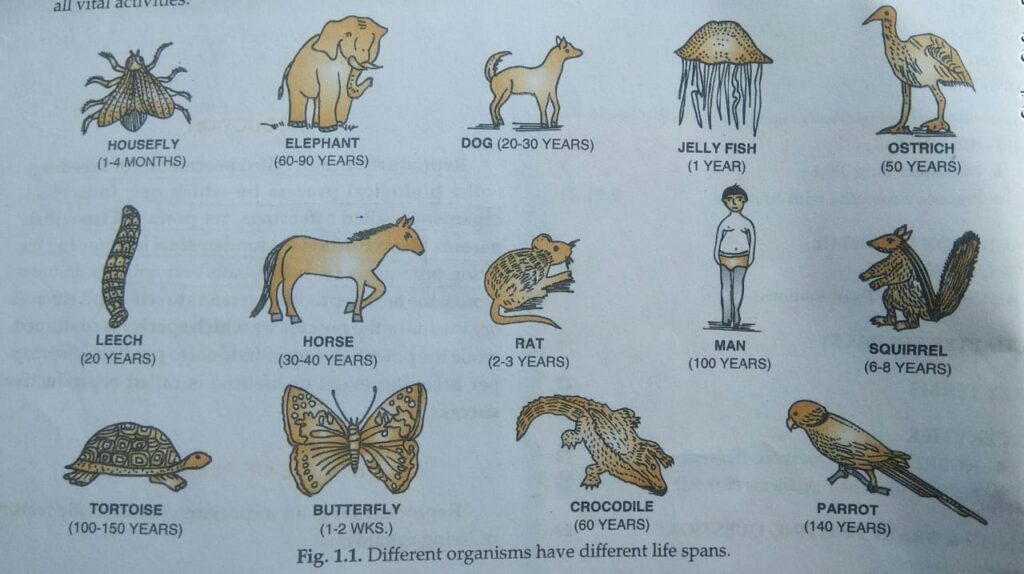
Asexual reproduction
Different ways of asexual reproduction:–
(i) Binary fission:-
Occurrence:– It occurs in many single celled organisms belonging to kingdom Monera (Bacteria), and protista (Amoeba and paramecium).
Mechanism:- In this process, the parent organism divides into two halves, each half forming and independent daughter organism. It means, the parent body as a whole forms reproductive unit and the parent continues living as two daughter individuals. It involves amitosis in bacteria and mitotic division of nucleus in yeast and amoeba i.e karyokinesis followed by division of cytoplasm i.e cytokinesis Depending upon the plane of division.
Binary fission is of the following types:-
(a) Simple Binary Fission ( Irregular Binary Fission):- Division can occur through any plane, e.g. Amoeba.
(b) Longitudinal Binary Fission:– The plane of fission passes along the longitudinal axis of the organism, e.g.Euhlena.
(c) Transverse Binary Fission:- The plane of this division runs along the transverse axis of the individual. e.g Bacteria, Paramoecium, Diatoms
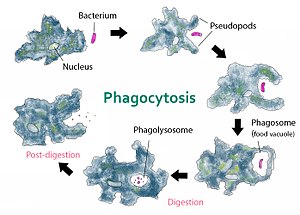
(ii) Budding:-
Occurrence:- Occurs in single celled organisms like yeast.
Mechanism:- In this process unicellular structure develops an outgrowth (bud) on one side. Daughter nuclei produced through karyokinesis shifts into the bud. The bud grows, constricts at the base, separates and eventually mature into new organism (cell). Unlike binary fission, cytoplasmic division is unequal and parental cell exists.
(iii) Sporulation:- Asexual reproduction can also occur through formation of specialized reproductive structure like spores by members of the kingdom fungi and simple plants such as algae.
The most commonly produced spores are zoospores and conidia.
Zoospores:- These are microscopic motile endogenous spores. They are most common asexual structures formed in algae. In unicellular green alga, Chlamydomonas zoospores is pyramid shaped, anteriorly flagellated, resembling parent cell.
Conidia:- These are non-motile spores produced on conidiophores. These are most common asexual spores produced by fungi.
Under unfavourable condition the Amoeba withdraws its pseudopodia and secrets a three layered hard covering of cyst around itself. This phenomenon is termed as encystations. When favourable conditions return, the encysted Amoeba divides by multiple fission and produces many minute Amoeba.
(iv) Fragmentation:- Fragmentation is a form of asexual reproduction where an organism splits into fragments. Each of these fragments develops into mature fully grownindividual followed by mitosis, e. g some algae (Spirogyra), filamentous fungi, Hydra etc.
(v) Vegetative Reproduction/Propagation:– In this method somatic part of the plant detaches from the body of the mother and develops into a new independent plant under suitable environmental conditions. The detachable somatic part involved in vegetative propagation is called vegetative propagule.
There are two types of vegetative propagation:–
- Natural methods of vegetative propagation:-
Natural methods of vegetative propagation in plants
(i) Stem (ii) Leaves (iii) Root
(i) Stem:-
(a) Underground stem-
Tuber eg. Potato
Rhizome eg. Banana and Ginger
Bulb eg. Onion and Garlic
(b) Subaerial stem:-
Offset eg. Echhornia and Pistia
Sucker eg. Chrysanthemum and pineapple
Runner eg. Grasses
(c) Aerial stem eg. Sugarcane and Opuntia
(d) Bulbils eg. Agave, Lily, Oxalis, Ananas and Dioscorea.
(ii) Leaves:- eg. Adiantum (walking fern) Begonia and Bryophyllum.
(iii) Root:- eg. Dahlia and sweet potato.
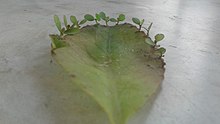
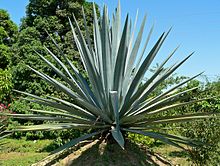
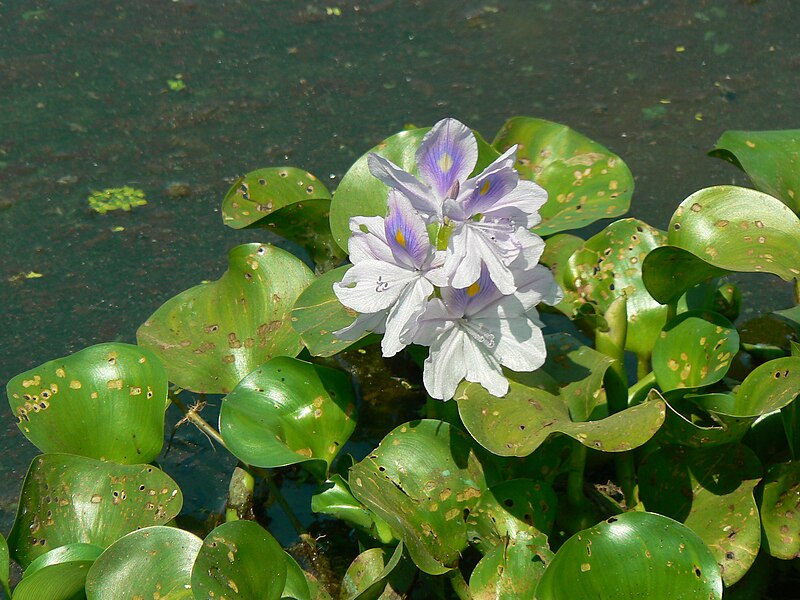
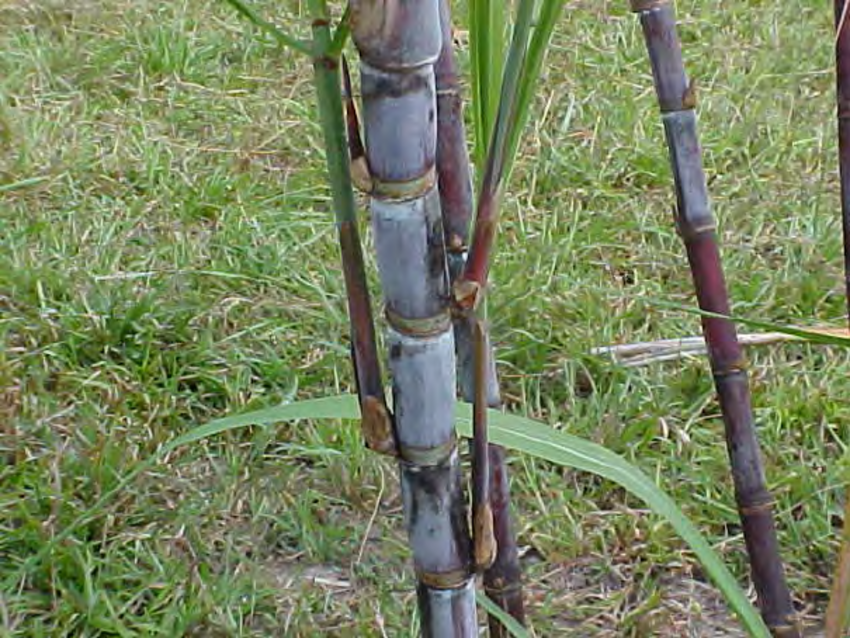
Note:- Water hyacinth was introduced in Bengal because of its beautiful flowers and shape of leaves. However, it termed out to be highly invasive aquatic weed found growing in standing water and it not only spread to all water bodies of Bengal but also throughout India. It drains oxygen from the water, which leads to death of fishes and other animals. Fish is supplement food of people in Bengal. Fast growth of Eichhornia causes death of fishes and food scarcity that’s why it is called “Terror of Bengal”.
Bulbils:- These are large size fleshy buds which are specialized for vegetative reproduction. For this bulbil must fall from the plant and reach the soil. They can be present at variable position on plant. In Agave, bulbils are modified floral buds that develop on the floral axis.
- Artificial methods of vegetative propagation:- These are man made special techniques in which part of somatic body of a plant develops into an independent plant. These methods include cutting, layering, grafting and micropropagation.
Asexual reproduction is a type of reproduction that does not involve the fusion of gametes or change in the number of chromosomes. The offspring arise from a single organism, and inherit the genes of that parent only. This method of reproduction is common among single-celled organisms and many plants and fungi.
The main types of asexual reproduction include:
- Binary fission: Common in prokaryotes like bacteria, where the cell divides into two identical cells.
- Budding: Observed in yeast and some animals like hydras, where a new organism grows from a certain part of the parent organism.
- Fragmentation: Seen in organisms like starfish and some plants, where the body breaks into pieces, each of which can grow into a new individual.
- Vegetative propagation: Common in plants, where new plants grow from parts like stems, roots, or leaves.
- Sporulation: Found in fungi and some algae, where spores are produced that can grow into new individuals.
Asexual reproduction involves only one parent and produces offspring that are genetically identical to the parent. Sexual reproduction involves two parents and the fusion of gametes, resulting in offspring with genetic material from both parents, leading to greater genetic diversity.
- Speed: Asexual reproduction can occur rapidly and can produce large numbers of offspring in a short period.
- No mate needed: It eliminates the need to find a mate, which can be advantageous in environments where mates are scarce.
- Genetic uniformity: Offspring are genetically identical to the parent, which can be beneficial in stable, unchanging environments.
- Lack of genetic diversity: Offspring are clones of the parent, which can make the population more susceptible to diseases and environmental changes.
- Limited adaptation: Without genetic variation, the ability to adapt to new or changing environments is reduced.